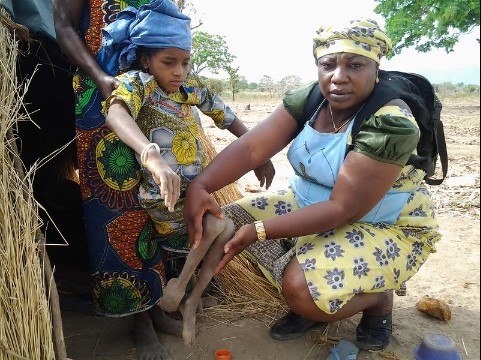KUALA LUMPUR, Dec 9 — The first case of polio was reported in Tuaran, Sabah, amid poor vaccination, 19 years after Malaysia eradicated the highly infectious disease that primarily affects young children.
Health director-general Dr Noor Hisham Abdullah said the case involved a three-month-old Malaysian baby boy, who was confirmed last Friday to be infected with vaccine-derived poliovirus type 1 (VDPV1), almost three decades after the last reported polio case in Malaysia in 1992.
World Health Organization (WHO) test results in Australia showed that the virus in the Sabah case had a genetic link with the polio virus that was detected in an acute flaccid paralysis (AFP) case in the neighbouring Philippines, which confirmed its fourth polio case last month after declaring an outbreak in September. AFP is a rapid onset of paralysis of one or more limbs that can indicate polio, according to the US’ Centers for Disease Control and Prevention (CDC).
“Subsequently, this vaccine-derived poliovirus type 1 was classified as a circulating vaccine-derived poliovirus type 1 (cVDPV 1),” Dr Noor Hisham said in a statement yesterday.
“The patient is currently being treated in an isolation ward and remains in stable condition, but is still need of breathing assistance.”
Those vaccinated against polio will be protected from infection, but as of last December 5, 11.6 per cent of children aged between two months and 15 years living in the area of the polio patient in Sabah, or 23 out of 199 people, did not receive the polio vaccine, according to Dr Noor Hisham.
In unsanitary conditions, the polio virus, which is transmitted by person-to-person mainly through the faecal-oral route, can infect those who don’t have immunity against polio and spread further in communities with polio immunisation coverage below 95 per cent.
Dr Noor Hisham explained that the cVDPV originated from the polio virus that had been weakened in the oral polio vaccine, but as the virus spread in the community, it experienced a genetic mutation until it became an active virus.
“As a result of explanations about the importance of polio immunisation to prevent polio infection, the parents of all the children have agreed for their offspring to receive the polio vaccine.”
Health authorities have searched for AFP cases that may indicate polio in the area where the infected child lived, but no one with AFP has yet to be detected in checks on 646 people as of December 5.
Polio immunisation activities will be continued in the infected child’s area and expanded to other risky areas to ensure polio vaccine coverage of above 95 per cent.
Dr Noor Hisham instructed all district health offices and health facilities to monitor for AFP, expand sampling in high-risk areas like those with foreigners from countries that currently have polio, and ensure above 95 per cent polio immunisation coverage in all localities in Malaysia, especially in Sabah that is nearest to the Philippines.
The Health DG also called for an increase in the monitoring of those dropping out of vaccination, raise awareness about polio and counter anti-vaccination influence, as well as public education about environmental cleanliness and personal and hand hygiene.
Malaysia and other countries in the Western Pacific were declared free from polio in October 2000. The polio vaccine was listed in Malaysia’s national immunisation programme since 1972, which was strengthened by changing the method of vaccination from oral to injection in 2008, said Dr Noor Hisham.
“This change of method was done to prevent the risk of the circulating vaccine-derived poliovirus (cVDPV).
“To prevent polio, immunisation coverage must always be above 95 per cent.”
According to WHO, polio, which mainly affects children below five years of age, invades the nervous system and can cause total paralysis in hours. Among those paralysed, 5 to 10 per cent die when their breathing muscles become immobilised.
The virus is transmitted from person to person mainly through the faecal-oral route. The WHO Western Pacific region was certified polio-free in 2000.
The government announced last October that health protection scheme mySalam would be expanded to cover polio effective next year.








